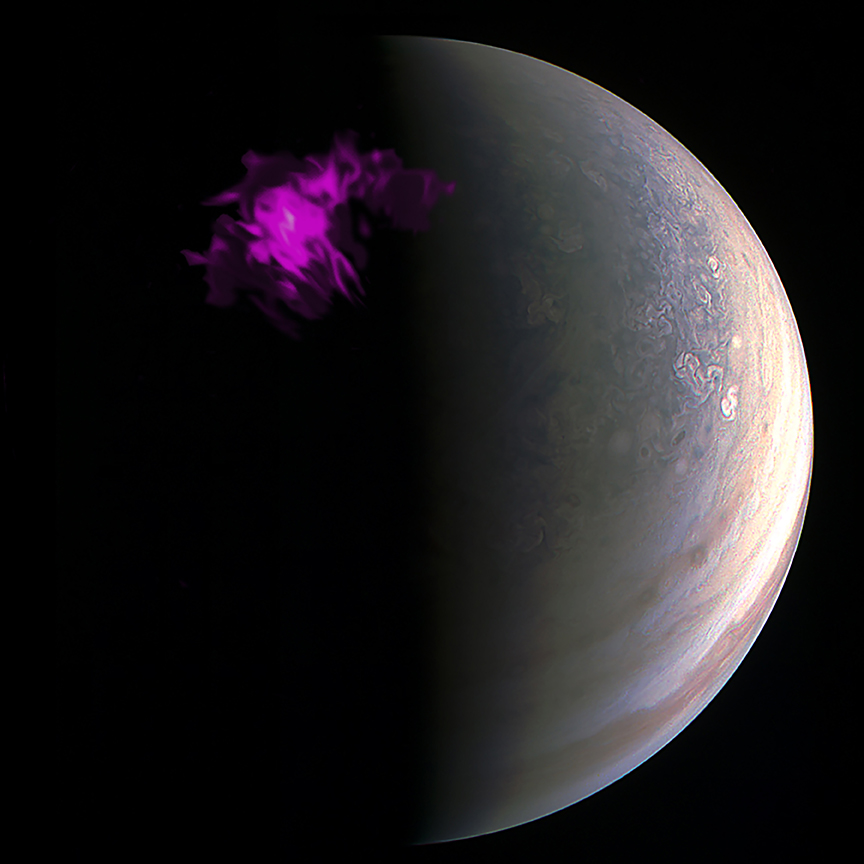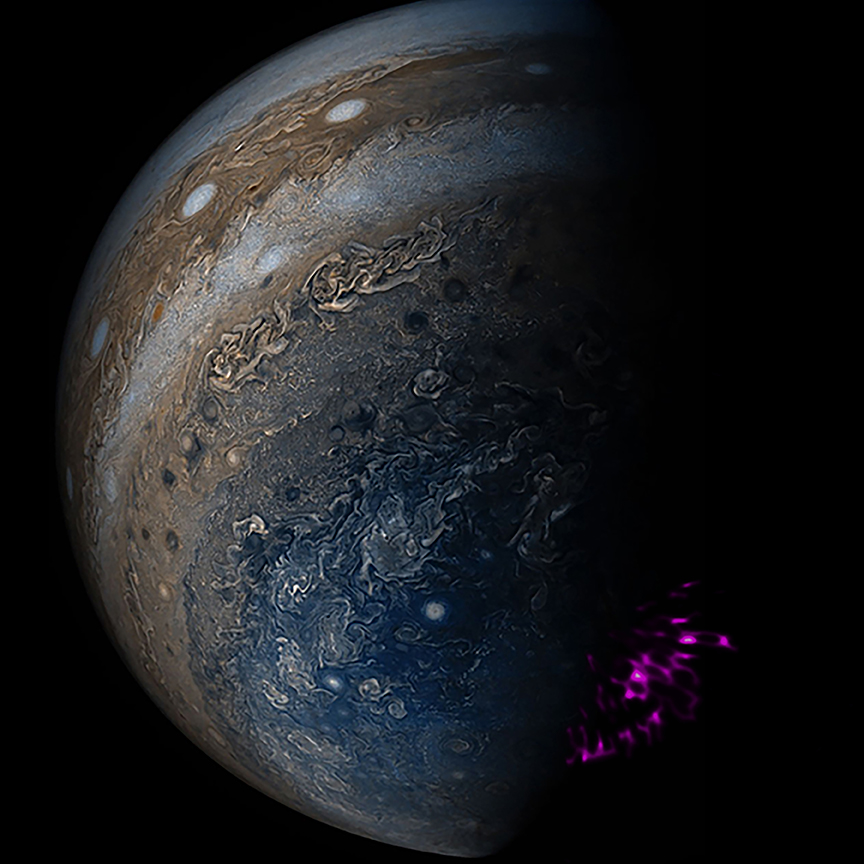Mysteries of Jupiter's Dazzling Auroras Highlighted in Fascinating Video
Jupiter's northern and southern lights continue to dazzle — and puzzle — the scientists who study them, as highlighted in a new video from the Chandra X-ray Center.
The video briefly describes new science results announced this week, which showed that Jupiter's northern and southern lights are out of sync. Unlike the auroras on Earth, which mirror each other at the planet's poles, Jupiter's northern and southern lights behave differently at each pole. (You can read the full Space.com story describing the finding here.)
The discovery was made with NASA's Chandra X-ray Observatory and the European Space Agency's XMM-Newton Observatory. (Jupiter is the only gas-giant planet in Earth's solar system with auroras that radiate in the X-ray range, according to a statement from the Chandra X-ray Center.) Jupiter's auroras were first observed by the Voyager 1 probe in 1979; researchers have also studied the planetary light show with the Hubble Space Telescope and, most recently, with the Juno spacecraft that is currently orbiting Jupiter. [X-ray Astronomy by the Chandra Observatory in Images]
Even after nearly 40 years of observations, scientists still don't fully understand how the auroras are created. But these space-based observations have made it possible for scientists to investigate this question — and capture stunning views in the process.
"In the future, scientists plan to combine data from Chandra, XMM-Newton and the Juno spacecraft currently orbiting Jupiter," according to the video. "They hope to reveal the source of this high-energy light show on the fifth planet from our sun."
Follow Calla Cofield @callacofield. Follow us @Spacedotcom, Facebook and Google+. Original article on Space.com.
Breaking space news, the latest updates on rocket launches, skywatching events and more!

Calla Cofield joined Space.com's crew in October 2014. She enjoys writing about black holes, exploding stars, ripples in space-time, science in comic books, and all the mysteries of the cosmos. Prior to joining Space.com Calla worked as a freelance writer, with her work appearing in APS News, Symmetry magazine, Scientific American, Nature News, Physics World, and others. From 2010 to 2014 she was a producer for The Physics Central Podcast. Previously, Calla worked at the American Museum of Natural History in New York City (hands down the best office building ever) and SLAC National Accelerator Laboratory in California. Calla studied physics at the University of Massachusetts, Amherst and is originally from Sandy, Utah. In 2018, Calla left Space.com to join NASA's Jet Propulsion Laboratory media team where she oversees astronomy, physics, exoplanets and the Cold Atom Lab mission. She has been underground at three of the largest particle accelerators in the world and would really like to know what the heck dark matter is. Contact Calla via: E-Mail – Twitter


